Physical Address
304 North Cardinal St.
Dorchester Center, MA 02124
The pandemic of human immunodeficiency / acquired immunodeficiency syndrome (HIV / AIDS) is proving to be a modern scourge. The sheer magnitude of the problem can be understood, to some extent, by looking at the figures in Tables 11-1 and 11-2 . There were an estimated 36.9 million individuals infected with HIV at the end of 2014. There were an estimated 2 million new infections in 2014 (down from 3.1 million in 2000), while 1.2 million deaths occurred due to AIDS and AIDS-associated conditions, compared with 2 million in 2005.
| Region | People Living With HIV 2014 | New HIV Infections 2014 | AIDS-Related Deaths 2014 (Total) | |||
|---|---|---|---|---|---|---|
| Total | Children | Total | Adults | Children | ||
| Global | 36.9 million [34.3 million–41.4 million] |
2.6 million [2.4 million–2.8 million] |
2.0 million [1.9 million–2.2 million] |
1.8 million [1.7 million–2.0 million] |
220 000 [190 000–260 000] |
1.2 million [980 000–1.6 million] |
| Region | People Living With HIV 2014 | New HIV Infections 2014 | AIDS-Related Deaths 2014 (Total) | |||
|---|---|---|---|---|---|---|
| Total | Children | Total | Adults | Children | ||
| Sub-Saharan Africa | 25.8 million [24.0 million–28.7 million] |
2.3 million [2.2 million–2.5 million] |
1.4 million [1.2 million–1.5 million] |
1.2 million [1.1 million–1.3 million] |
190 000 [170 000–230 000] |
790 000 [670 000–990 000] |
| Asia and the Pacific | 5.0 million 4.5 million–5.6 million |
200 000 [180 000–230 000] |
340 000 [240 000–480 000] |
320 000 [230 000–450 000] |
21 000 [16 000–27 000] |
240 000 [140 000–570 000] |
| Latin America | 1.7 million [1.4 million–2.0 million] |
33 000 [29 000– 40 000] |
87 000 [70 000– 100 000] |
85 000 [68 000– 100 000] |
2000 [1300–2900] |
41 000 [30 000– 82 000] |
| Caribbean | 280 000 [210 000–340 000] |
13 000 [10 000–16 000] |
13 000 [9600–17 000] |
13 000 [9300–16 000] |
< 500 [< 500–< 1000] |
8800 [5700–13 000] |
| Middle East and North Africa | 240 000 [150 000–320 000] |
13 000 [10 000–16 000] |
22 000 [13 000–33 000] |
20 000 [12 000–30 000] |
2400 [1800–3300] |
12 000 [5300–24 000] |
| Eastern Europe and Central Asia | 1.5 million 1.3 million–1.8 million |
17 000 [14 000–19 000] |
140 000 [110 000–160 000] |
130 000 [110 000–160 000] |
1200 [< 1000–1600] |
62 000 [34 000–140 000] |
| Western and Central Europe and North America | 2.4 million [1.5 million–3.5 million] |
3300 [2200–4700] |
85 000 [48 000–130 000] |
85 000 [47 000–130 000] |
< 500 [< 200–< 500] |
26 000 [11 000–86 000] |
It is also clear from Table 11-2 that the main problem rests in sub-Saharan Africa and Southeast Asia. These regions are part of the developing world and are densely populated. Thus, the onus of the battle against HIV / AIDS is shifting from the developed world to the developing world, worsening the socioeconomic upheavals faced by these areas.
India has the third-highest number of people living with HIV in the world, with 2.1 million Indians accounting for about four out of 10 people infected with the deadly virus in the Asia–Pacific region, according to a UN report (2015). At the end of 2013, more than 700 000 people were on antiretroviral therapy, the second largest number of people on treatment in any single country. It is estimated that HIV treatment coverage is only 36% in India, where 51% of AIDS-related deaths occur.
HIV infection is transmitted in the following ways:
By sexual contact, both homosexual and heterosexual
By transfusion of blood and blood products, including in intravenous drug users (IVDU)
From infected mother to infant, whether antepartum, perinatal, or via breast milk.
As yet, there is no evidence to prove that HIV is transmitted by casual contact or insect bite.
Unprotected sexual intercourse is the major cause of HIV transmission worldwide. In the tropics, including India and the African subcontinent, heterosexual transmission is the commonest mode of infection:
HIV has been demonstrated in semen, both within infected mononuclear cells and in the cell-free state. The virus appears to concentrate in semen in inflammatory conditions such as urethritis and epididymitis, owing to an increase in the number of mononuclear cells present. HIV has also been demonstrated in cervical and vaginal fluid.
There is a strong association of HIV transmission with receptive anal sex. The virus can also be transmitted to either partner through vaginal intercourse. A linear prospective study in the USA has shown that male-to-female transmission was approximately eight times more efficient than female-to-male transmission.
Sexually transmitted disease (STD), especially genital ulcer disease (GUD), is also a major risk factor, with regard to infectivity and susceptibility to infection. Coinfection with syphilis, chancroid, donovanosis, lymphogranuloma venerum, or genital herpes, as well as non-ulcerative inflammatory conditions such as gonorrhea, non-gonococcal urethritis, trichomoniasis, bacterial vaginosis, and reproductive tract inflammation such as vaginitis, cervicitis, and salpingitis have been linked to an increased risk of transmission.
Lack of circumcision is also strongly associated with a higher risk. This may be due to an increased susceptibility to ulcerative STDs and increased trauma.
Oral sex is much less efficient in this regard. However, there are several documented cases of HIV transmission resulting solely from receptive fellatio and insertive cunnilingus.
Persons who receive contaminated blood / blood products and organ transplants are also at risk. Intravenous drug users (IVDUs) are affected by sharing injection material such as needles and syringes. Subcutaneous (skin-popping) or intramuscular (muscling) injections can also transmit HIV. In IVDUs, the risk increases with the duration of the addiction and a large number of sharing partners.
Transfusions of whole blood, packed red blood cells, platelets, leukocytes, and plasma are also capable of transmitting HIV infection. In contrast, hyperimmune gamma globulin, hepatitis immune globulin, plasma-derived hepatitis B vaccine, and RhO immune globulin have not been associated with its transmission. The procedures involved in their production either inactivate or remove the virus. Due to these risks, the screening of donated blood / blood products as well as of organ donors has been made mandatory worldwide.
There is also a small but definite occupational risk of HIV transmission in health-care workers (HCWs), laboratory employees, and in individuals working with HIV-infected specimens, especially when using sharp objects. The risk is increased with exposure involving a relatively large quantity of blood and / or a procedure that involves venesection or deep injury. The risk also increases with high concentration of the virus in the blood and with the presence of more virulent strains. The very occurrence of transmission of HIV, as well as hepatitis B and C, to and from HCWs in the workplace underscores the importance of the use of universal precautions when caring for all patients.
This is an important form of transmission of HIV infection in developing countries. HIV can be transmitted from mother to fetus as early as the first or second trimester of pregnancy. However, maternal transmission to the fetus occurs mainly in the perinatal period.
Maternal factors indicative of a high risk of transmission include:
High levels of plasma viremia, low CD4+ T-cell counts and anti-p24 antibody levels
Vitamin A deficiency, prolonged labor, chorioamnionitis at delivery or STDs during pregnancy, cigarette smoking and hard-drug use during pregnancy, and preterm labor
Obstetric procedures such as amniocentesis and amnioscopy.
Although MTCT occurs chiefly during pregnancy and at birth, breast-feeding may account for 5–15% of infants being infected after delivery. High levels of HIV in breast milk, presence of mastitis, low maternal CD4+ T-cell counts, and maternal vitamin A deficiency all increase the risk. The risk is highest in the early months prior to weaning, and with exclusive breast-feeding.
To summarize, the probability of HIV-1 infection per exposure can be assessed from Table 11-3 .
| Mode of Transmission | Infections Per 100 Exposures |
|---|---|
| Male to female, unprotected vaginal sex | 0.05–0.5 |
| Female to male, unprotected vaginal sex | 0.033–0.1 |
| Male to male or male to female, unprotected anal sex | 0.5–10.0 |
| Needlestick injury | 0.3 |
| Mother-to-child transmission | 13–48 |
| Exposure to contaminated blood products | 90–100 |
HIV belongs to the subfamily Lentivirinae, which is a part of the family Retroviridae. There are two main groups of human retroviruses:
Human T-lymphotropic virus (HTLV): there are two distinct transforming viruses, designated HTLV-I and HTLV-II respectively.
HIV: these are designated HIV-1 (formerly HTLV-3) and HIV-2.
Molecular analyses of various HIV isolates reveal sequence variations in many parts of the viral genome, especially in the hypervariable region, e.g., the V3 region, which is a target for neutralizing antibodies and contains recognition sites for T-cell responses. There are four groups of HIV-1: (1) group M (major) which is responsible for most of the infections around the world; (2) group O (outlier) which is restricted to West–Central Africa; (3) group N which was first identified in a Cameroonian woman with AIDS; and (4) group P, a new strain closely related to gorilla simian immunodeficiency virus, which was first detected in Cameroon in 2009.
The M group includes eight subtypes or clades, designated A, B, C, D, F, G, H, and J, as well as four major circulating recombinant forms (CRFs). These four CRFs are: (1) the AE virus, present in Southeast Asia, (2) AG from West–Central Africa, (3) AGI from Cyprus and Greece, and (4) AB from Russia. The pattern of HIV-1 variations worldwide may be a consequence of the sex trade. Although subtype B predominates in the USA, Canada, certain South American countries, Western Europe and Australia, subtype C is the most common form worldwide. In Africa, more than 75% of strains recovered have been of subtypes A, C, and D, with C being the most common, whereas in Asia, HIV-1 isolates of subtypes E, C, or B predominate. Subtype E predominates in Southeast Asia, whereas subtype C is prevalent in India. Recombination among viruses of different clades occurs as a result of multiple infections in an infected individual with viruses of different clades, particularly in areas where clades overlap.
HIV-2 was first isolated from AIDS patients from West Africa (Guinea-Bissau and Cape Verde) in 1986. The genetic structure of HIV-2 is similar to HIV-1, although HIV-2 has a vpx gene instead of the vpu gene. The nucleotide and amino acid homology between the viruses is about 60% for the more conserved gag and pol genes, but only 30–40% for the other viral genes, including env . The structure of the virion of HIV-2 is very similar to HIV-1. The difference in envelope and other proteins induces the host to form antibodies, which can be distinguished from HIV-1-induced antibodies. This forms the basis of the serologic tests that differentiate between HIV-1 and HIV-2 infection. Sequencing of pol , env , and gag genes has led to the distinction of six different HIV-2 subtypes.
In the majority of individuals, HIV-2 single infection can be diagnosed confidently with serologic assays in an appropriate algorithm. Dual seroreactivity is most suggestive of dual infection, although subsequent confirmation with sensitive genome detection techniques is required. In some cases, confirmation cannot be secured. Similar to HIV-1, HIV-2 also demonstrates molecular heterogeneity. There are six subtypes of HIV-2 virus, of which subtype A is the most common. Subtypes A and B are pathogenic; for the other subtypes (C, D, E, and F) the pathogenicity is not known.
The lower transmissibility of HIV-2 by the heterosexual route suggests that, in a population where both viruses are being transmitted sexually, HIV-1 will competitively displace HIV-2 in the long term. The age peak of HIV-2 prevalence is distinctly higher than that of HIV-1 (HIV-1: 20–34 years, HIV-2: 35–45 years or 50–59 years). The higher peak age of HIV-2 may reflect several aspects of HIV-2 epidemiology, including lower heterosexual transmissibility, lower mortality, and cohort effect. Evidence for the classical transmission routes is strong for vertical and heterosexual transmission, good for blood transfusion, circumstantial for intravenous drug use and the homosexual route, and lacking for needlestick injuries ( Table 11-4 ).
| HIV-1 | HIV-2 | |
|---|---|---|
| Mother-to-child transmission rate | 20–30% | 0–4% |
| Geographical spread | Worldwide | West Africa; with links to Portugal; India |
| Age peak | 20–34 years | 45–55 years |
| Excess mortality | 10-fold | Two fold |
| Transmission routes | Heterosexual; homosexual; IVDU; BT; mother to child; needlestick | Heterosexual; homosexual; IVDU; BT; mother to child |
| Rural–urban difference | Higher prevalence in urban | Similar prevalence urban and rural |
| Trend | Prevalence rising in most countries | Stable prevalence in most countries |
The virus is an icosahedron, with a diameter of 100–120 nm ( Fig. 11-1 ). It is surrounded by a lipoprotein membrane in which are embedded 72 trimetric glycoprotein complexes composed of the external protein gp120 and the transmembrane gp41. These are important in viral attachment and entry. The icosahedron houses the conical nucleocapsid, which contains the matrix and the viral ribonucleic acid (RNA). The viral RNA is 9.7 kb long and contains genes that code for viral structural and regulatory proteins. These genes are the gag gene, which codes for the core; the pol gene, encoding the viral enzymes; and the env gene, encoding the membrane proteins. The regulatory and accessory genes are named tat , rev , nef , and vpi, vpu , vpr , and vpx respectively. They are important in transcription, translation, and maturation of viral proteins in the host cell. They also define the infectivity of the species.
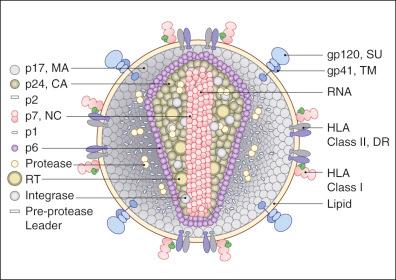
The first event is attachment of the virion to the host cell ( Fig. 11-2 ). The membrane protein gp120 expresses a binding site for the human CD4 receptor. The virus also utilizes two additional coreceptors, CCR5 and CXCR4, which are primary receptors for certain chemoattractant cytokines called chemokines. CCR5 is expressed on monocytes, macrophages, and lymphocytes while the CXCR4 receptor is expressed only on T lymphocytes. Certain strains of HIV utilize the CCR5 coreceptor (R5). These are usually macrophage tropic, while those that use the CXCR4 coreceptor (X4) are T-cell tropic. However, many strains may be dual tropic. R5 viruses are said to be non-syncytium-inducing (NSI), while the X4 strains are syncytium-inducing (SI). In reality, under ideal conditions, both R5 and X4 viruses are capable of syncytium formation in culture. The transmitting virus is almost invariably an R5 strain. However, in approximately 40% of individuals, there is a transition to the X4 strain later in the disease (the R5X4 switch), which is associated with an aggressive course and poorer prognosis.
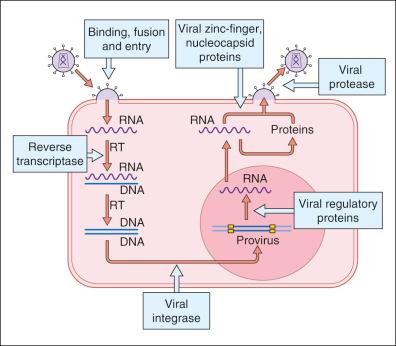
Attachment of gp120 to CD4 exposes gp41. This acts like a harpoon and facilitates viral fusion. Inside the cell, the virion is uncoated and the viral proteins are released. Reverse transcriptase (RT) has many functions: RNA-dependent DNA polymerization, DNA polymerization from a single-stranded DNA intermediate, and RNAse H activity that degrades the RNA intermediates. A copy of the viral genome is formed and transported to the host nucleus. This is integrated into the host DNA by the viral integrase. The provirus now controls the cell and reproduces itself. New molecules are cleaved by the viral protease, which results in infectious viral particles budding through the host membrane. In this process, various host cell proteins are incorporated into the lipid envelope. Reverse transcription is extremely error prone. Combined with the high frequency of viral replication, this results in the formation of many closely related viral species in the same patient. These are called quasi-species. This infection is established in lymph nodes and other lymphoid organs, and persistent viral replication can be detected in these foci.
Although attachment occurs, only limited reverse transcription occurs in the absence of a suitable stimulation. This is called preintegration latency. Even after integration, the absence of cellular activation signals leads to latency, called postintegration latency. This pool of latently infected cells, mostly memory T cells, prevents the complete eradication of virus by antiretroviral drugs.
The half-life of the circulating virion is approximately 30 minutes and that of a productively infected cell is 1 day. Given the relatively steady state of plasma viremia and of infected cells, it appears that extremely large numbers of virus (approximately 10 10 ) are produced and cleared from the circulation each day. Data also suggest that the minimum duration of the HIV-1 replication cycle in vivo averages 1.5 days. The steady-state level, called the viral set point, is attained after approximately 1 year. It has prognostic implications and the levels seem to correlate with the rapidity of disease progression.
As a result of relentless viral replication, CD4 T-cell numbers and function are compromised. Infected T cells are destroyed, leading to depletion. This destruction may be a direct result of HIV attachment and multiplication, which cause decreased membrane integrity and interference with normal cellular events. Indirect mechanisms include syncytium formation, apoptosis, and the “bystander effect,” in which uninfected cells are accidentally killed as a result of immune response directed to adjacent infected cells.
This has two components: the innate response and the adaptive response.
This utilizes natural killer (NK) cells and macrophages. It is independent of cell-surface receptor / immunoglobulins, as well as of major histocompatibility complex (MHC) restriction. It also lacks memory. An early and vigorous non-specific protective response can prevent viral multiplication and spread. It also allows the adaptive system to mount an effective protective response.
Two cell-surface receptors on the innate immune cells play an important role. These are the Toll-like receptors, which interact with microorganisms and their products to generate interleukin-12 (IL-12), which in turn stimulates dendritic cells; and the heat-shock proteins, which bind to foreign antigens and enter the antigen-presenting cells (APCs). This facilitates the presentation of the antigens on the APC surface, and therefore to the cytotoxic T lymphocytes (CTLs), in conjunction with MHC class I molecules.
Cellular immune responses, particularly specific anti-HIV perforin-secreting CTLs, are important in host response to HIV. Perforins are cytolytic “cell-killing” molecules. Besides direct cytolysis, CTLs also produce chemokines that compete with HIV-1 for the CCR5 receptor. However, HIV-1-infected patients demonstrate an impaired CTL response. This is because of a defective virus-specific Th1 response, as well as the development of CTL-escape mutations in the infecting virus. Levels of CTLs are inversely related to the viral load. Thus, HIV-specific CTLs produce a full range of antiviral cytokines and chemokines on encounter with antigens, but are often characterized by low levels of perforins. This leads to ineffective target cell destruction. An antibody response is also noted. However, potent neutralizing antibodies are rarely formed in vivo and neutralization-resistant variants develop rapidly in chronic infection.
Thus, the various components of the immune response to HIV can be tabulated as follows:
Humoral immunity:
Binding antibodies
Neutralizing antibodies:
Type-specific: generally directed to the V3 loop region, these antibodies are strain-specific and present in low titers
Group-specific: two forms, binding to specific amino acid regions of gp120 and gp41 respectively
Antibodies participating in antibody-dependent cellular cytotoxicity (ADCC):
Protective: mediated by NK cells
Pathogenic: bystander killing
Enhancing antibodies: directed to gp41, which facilitate infection of cells through an Fc-receptor-mediated mechanism
Cell-mediated immunity:
Helper CD4+ T lymphocyte: a reverse correlation exists between the presence of these cells and levels of plasma viremia
Class I MHC restricted cytotoxic CD8+ T lymphocytes, through their HIV-specific receptors, bind and cause lytic destruction of target cells bearing identified MHC class I molecules associated with HIV antigen
CD8+T-cell-mediated inhibition (non-cytolytic): mediated by soluble factors inducing the CC-chemokines, viz. RANTES, MIP-1b and MIP-1a, which suppress HIV replication
ADCC
NK cells.
Within 2–3 weeks of viral transmission, the acute retroviral syndrome develops, which lasts for about 2–3 weeks. It is followed by chronic HIV infection and, after an average period of 8 years, the patient develops symptomatic infection/AIDS-defining illness. The course of the disease from the time of initial infection to the development of full-blown AIDS is divided into the following stages.
Acute retroviral syndrome is the symptom complex that follows infection, and is experienced by 80–90% of HIV-infected patients, but this diagnosis is infrequently recognized. The time from the initial exposure to onset of symptoms is usually 2–4 weeks, but may be as long as 10 months in rare cases. The clinical symptoms include fever, lymphadenopathy, pharyngitis, erythematous macular and papular rash ( Fig. 11-3 ), arthralgia, myalgia, diarrhea, nausea, vomiting, headache, mucocutaneous ulceration involving mouth, esophagus, or genitals, hepatosplenomegaly, and thrush. The neurologic features include meningoencephalitis, peripheral neuropathy, facial palsy, Guillain–Barré syndrome, brachial neuritis, radiculopathy, cognitive impairment, and psychosis. The laboratory findings include lymphopenia followed by lymphocytosis with depletion of CD4 cells, CD8 lymphocytosis, and often, atypical lymphocytes. The transaminase levels may be elevated. The diagnosis is established by demonstrating quantitative plasma HIV RNA or qualitative HIV DNA and negative or indeterminate HIV serology. Complete clinical recovery, with a reduction in plasma levels of HIV RNA, follows. The preliminary studies indicate that aggressive antiretroviral therapy protects active HIV-specific CD4 cells from HIV infection to preserve a response analogous to the response seen in non-progressors. The observation emphasizes the importance of early recognition and aggressive antiretroviral therapy. The seroconversion with positive HIV serology generally takes place at an average of 3 weeks after transmission with the standard third-generation enzyme immunoassay (EIA). By using standard serologic tests, it now appears that more than 95% of patients seroconvert within 5–8 months following transmission.

During this period, the patient is clinically asymptomatic and generally has no findings on physical examination, except in some cases for PGL; PGL is defined as enlarged lymph nodes involving at least two non-contiguous sites, other than inguinal nodes, persisting for more than 3 months. Detailed history-taking followed by thorough clinical examination is necessary. Incidental findings could be scars from previous genital ulcer disease (GUD) or herpes zoster, lymphadenopathy, oral hairy leukoplakia (OHL), and even asymptomatic dermatologic manifestations. HIV screening of conjugal partners or relevant children after informed consent is essential. The baseline investigations to be undertaken include complete hemogram (including platelet count), erythrocyte sedimentation rate (ESR), serologic tests for syphilis (STS), hepatitis B and C serology, liver function tests, urine examination, chest radiography, sonography of abdomen / pelvis, and Mantoux test.
The evaluation of CD4 / CD8 lymphocytes as well as estimation of HIV-1 viral load is optional in resource-poor setups, in the absence of a plan to initiate antiretroviral therapy. It may help only to decide regarding initiation of chemoprophylaxis against opportunistic infections (OI). It is important to offer counseling, emphasizing maintenance of food and water hygiene, lifestyle modification, such as practicing safer sex, and refraining from organ donation (blood, semen, kidney, etc.). The periodic follow-ups (every 3–6 months), consisting of history-taking, clinical examination, baseline investigations, and counseling, are of equal importance.
During the symptomatic HIV infection previously known as AIDS-related complex (CD4 counts between 200 and 499 cells / mm 3 , category B symptoms, CDC clinical classification), the skin and mucous membranes are predominantly involved. Widespread seborrheic dermatitis is the most common presentation. Other features include multidermatomal herpes zoster, molluscum contagiosum (MC) ( Fig. 11-4 ), OHL, pruritic dermatitis, folliculitis, dermatophyte infection, recurrent vulvovaginal candidiasis, and oral candidiasis ( Fig. 11-5 ). Upper and lower respiratory tract infections caused by Streptococcus pneumoniae , Haemophilus influenzae , and Mycoplasma pneumoniae may also occur. Other features during this stage include Kaposi's sarcoma (KS) ( Fig. 11-6A–D ), pulmonary tuberculosis (TB), cervical dysplasia, and idiopathic thrombocytopenic purpura (ITP).
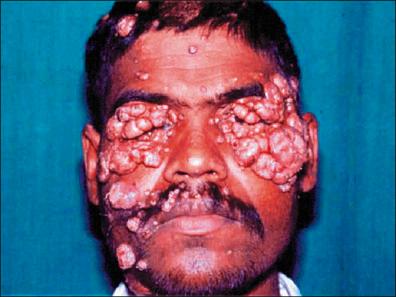
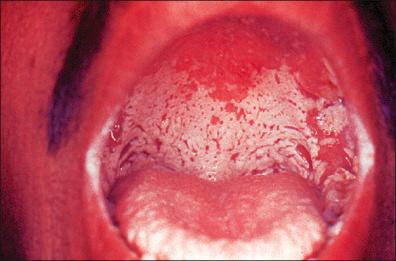
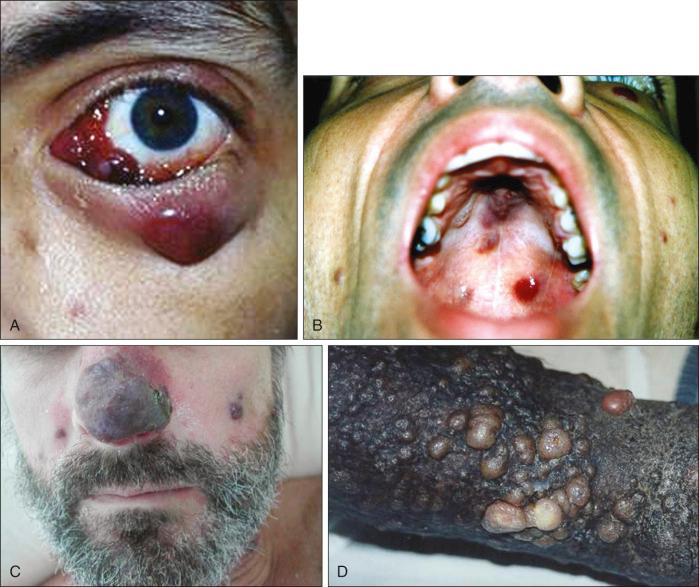
This stage (CD4 counts between 50 and 200 cells / mm 3 , category C symptoms, CDC clinical classification ) is characterized by opportunistic infection (OI) and malignancy. Other features are persistent and progressive constitutional symptoms, wasting disease, and neurologic abnormalities.
Advanced HIV disease is characterized by CD4 cell counts of < 50 / mm 3 .
As in the previous stage, advanced HIV disease is also characterized by AIDS-defining OIs and malignancy. Some of the infections are more frequently seen, like M. avium complex (MAC), cytomegalovirus (CMV) ( Fig. 11-7 ), cryptococcal meningitis ( Fig. 11-8 ), histoplasmosis ( Fig. 11-9 ), slow virus disease, and cervical dysplasia. Central nervous system (CNS) involvement is also very prominent, and includes AIDS dementia complex, CNS lymphoma, and CMV infection. AIDS-wasting syndrome with a weight loss of > 10% of ideal body weight is common.

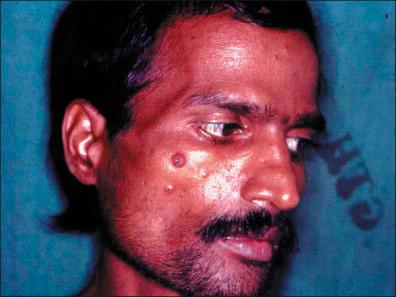
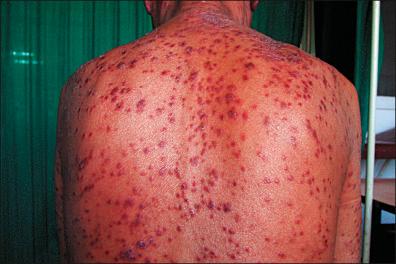
The CDC has proposed the following clinical classification for HIV infection in adults and adolescents. It is based on three ranges of CD4 cell counts and three clinical categories, as given in Table 11-5 .
| CD4 Count (per mm 3 ) | A | B | C |
|---|---|---|---|
| > 500 | A1 | B1 | C1 |
| 200–500 | A2 | B2 | C2 |
| < 200 | A3 | B3 | C3 |
| The categories in bold type indicate the expanded AIDS surveillance case definition. The conditions included in each category are given below: |
|||
| A: This includes: Acute retroviral syndrome Persistent generalized lymphadenopathy Asymptomatic disease |
|||
| B: This includes: Symptoms of AIDS-related complex Bacillary angiomatosis ( Fig. 11-10 ) Candidiasis, mucosal (thrush, vulvovaginal: persistent, frequent or poorly responsive to therapy) Cervical dysplasia (moderate or severe) / cervical carcinoma-in-situ Constitutional symptoms, such as fever (38.5°C) or diarrhea lasting > 1 month Herpes zoster ( Fig. 11-11 ), recurrent and multidermatomal Idiopathic thrombocytopenic purpura (ITP) Listeriosis Oral hairy leukoplakia (OHL) Pelvic inflammatory disease, particularly tubo-ovarian abscess Peripheral neuropathy |
|||
| C: This includes: AIDS-defining conditions CD4 count < 200 / mm 3 Candidiasis, pulmonary or esophageal Cervical cancer, invasive Coccidioidomycosis, disseminated or extrapulmonary Cryptococcosis, extrapulmonary (see Fig. 11-8 ) Cryptosporidiosis, chronic intestinal (> 1 month) Cytomegalovirus (CMV) infection (excluding liver, spleen, and lymph nodes) and retinitis (with loss of vision) Herpes esophagitis, bronchitis, pneumonia or chronic cutaneous and / or oral ulcers (> 1 month) HIV encephalopathy Toxoplasmosis, disseminated or extrapulmonary Isosporiasis, chronic intestinal (> 1 month) Kaposi's sarcoma (see Fig. 11-6 ) Lymphoma, primary central nervous system or Burkitt's lymphoma Mycobacterial disease ( Figs. 11-12–11-18 ) Pneumocystis jirovecii infection, commonly pneumonia (PCP) Pneumonia, recurrent bacterial Progressive multifocal leukoencephalopathy (PML) Salmonellosis Wasting syndrome |
|||
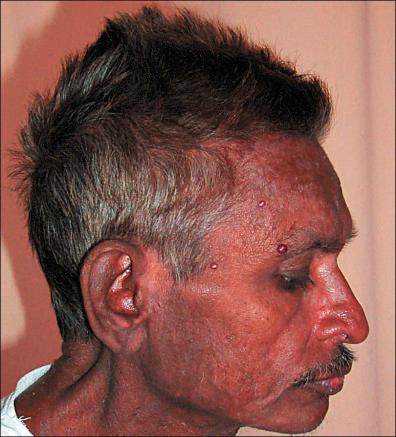
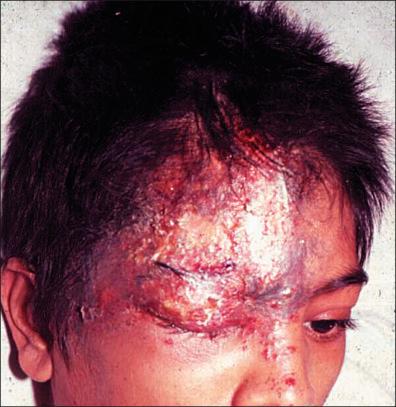
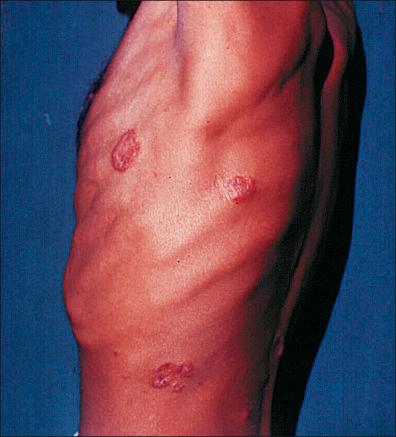
HIV-2 infection can also lead to CD4 decline, OIs, HIV-associated malignancies, and early death. The median time from infection to AIDS is longer than in HIV-1: cases with an incubation period of 14 years, and even 27 years, have been reported. The clinical manifestations of symptomatic HIV-2 disease are broadly similar to those of HIV-1. The only marked difference may be the lower frequency of KS among HIV-2 patients. In a Gambian study, survival for HIV-2 patients with AIDS was three times longer than for HIV-1 AIDS patients. Most studies demonstrated decreased CD4 cell percentage or CD4 cell count in HIV-2 subjects; also, in those who are clinically asymptomatic, the rate of decline was slower in HIV-2 patients. The proviral load of the two infections did not differ at any stage of infection. The majority of HIV-2 patients are long-term non-progressors, who live in the community unnoticed by health services, and who have detectable provirus, stable CD4 cell percentage, no detectable plasma viral load, are asymptomatic, and have no increased mortality risk.
Individuals who remain alive for 10–15 years after the initial infection are called “long-term survivors.” In such patients, the course is progressive and immunodeficiency is significant. In some of these individuals, CD4+T cells counts have decreased to < 200 / ml and many have suffered OIs. However, the counts have remained stable for years at that level. The reasons are not defined, but highly active antiretroviral therapy (HAART) and prophylaxis against OI may play a role. In addition, certain viral and / or host determinants may play a role.
Fewer than 5% of HIV-infected individuals are characterized as long-term non-progressors. These individuals have been infected with HIV for a long period (> 10 years, including one patient infected > 30 years ), but their CD4+ T cells counts are in the normal range, and they have remained stable over years despite not receiving antiretroviral therapy. These persons have extremely effective anti-HIV immune responses, both humoral and cell mediated. Also some such individuals are infected with defective virus (e.g., with deletions in the nef gene and other genome detects). Host factors that contribute are heterozygosity for the genes coding for the coreceptors (e.g., the CCR5-delta32 deletion or the CCR2-64I mutation). The protective presence of the CCR5-delta32 deletion can be confirmed by the case of Timothy Brown, the celebrated Berlin patient.
Certain infected individuals develop low CD4+ T-cell counts and AIDS-defining illnesses within 2–3 years of infection. They bear certain human leukocyte antigen (HLA) antigens (e.g., HLA-A1, -A24, -C7, etc.), or are homozygous for the class I loci, or are usually infected with the X4 strains.
The diagnosis of HIV infection is based on the demonstration of antibodies to HIV / HIV antigens or the direct detection of viral antigens. These tests may be classified as:
Tests for HIV-specific antibodies in serum and plasma:
Screening tests:
Enzyme-linked immunosorbent assays (ELISA): the ELISA is the standard screening test used. It is a solid-phase assay in which the antibody is detected using the sandwich technique. It has a sensitivity of > 99.5%, but the specificity is not optimal in low-risk cases. Also, a number of conditions may interfere with the test result and cause false-positive reactions. The CDC currently suggests that screening should be done using a combination antigen–antibody immunoassay that detects antibodies against both HIV-1 and HIV-2, along with presence of HIV-1 p24 antigen in blood. Patients who test positive in this screening test should be tested further using a virus-specific antibody test to confirm infection with HIV-1 or HIV-2. In case of a positive combination test, and an indeterminate or negative specific antibody test, a nucleic acid amplification test (NAT) should be done to confirm infection.
Rapid tests: these are visual tests in which a positive test appears as a dot on a tile or a comb, or as agglutination on a slide.
Supplemental tests:
Western blot assay: viral antigens are separated on the basis of their molecular weights and antibodies to each are detected as distinct bands. The test is considered positive if antibodies to at least two of the following are detected: p24, gp41, or gp120 / 160.
Immunofluorescence tests.
Tests on saliva: although these kits are efficacious, there is some concern about how early following infection the antibody is detectable in saliva as compared with serum / plasma; as well as the minimum concentration of immunoglobulin G (IgG) at which each kit gives a correct result.
Confirmatory tests:
Virus isolation: this assay is 100% specific, but its sensitivity varies with the stage of HIV infection. In both adults and in children, the virus cannot be cultured from peripheral blood mononuclear cells (PBMCs) for approximately 6 weeks following the time of transmission. However, this procedure is labor intensive and dangerous and undertaken only in specialized laboratories.
Detection of the p24 antigen: this test detects the unbound HIV p24 antigen in the serum. The test may be useful: (i) during the window period, (ii) during late disease when the patient is symptomatic, (iii) to detect HIV infection in the newborn because diagnosis is difficult owing to presence of maternal antibodies, (iv) when neurologic involvement is suspected, the test is performed with cerebrospinal fluid.
Detection of HIV RNA: three different techniques, namely RT polymerase chain reaction (RT-PCR), nucleic acid sequence-based amplification (NASBA) and branched DNA (bDNA) assay, have been employed to develop commercial kits.
Monitoring tests:
CD4+ T-cell count: this is expressed as a product of the CD4 cell percentage, derived by flow cytometry, and the total lymphocyte count determined by the white blood cell counts. It is performed at diagnosis and every 3–6 months thereafter. Two determinations are usually performed before any decision to start or change HAART is taken.
Viral load: this is the same as detection of HIV RNA copies.
Surrogate tests: these include estimation of:
Circulating levels of neopterin, β2-microglobulin, and soluble IL-2 receptors
HIV IgA levels
Levels of acid-labile endogenous interferon or tumor necrosis factor alpha (TNF-α).
Most OIs in AIDS occur when the CD4 count falls below 200 cells / mm 3 . The spectrum of OIs in AIDS has been covered in the expanded CDC case definition. It can best be understood by studying the organ system involvement.
In the tropics, the almost ubiquitous presence of Mycobacterium tuberculosis leads to the flare-up of hitherto quiescent lesions into active foci of infection, as a result of immunosuppression. TB is therefore the commonest presentation of HIV disease in the tropics. Over 15% of TB patients in India are likely to be HIV positive. Extrapulmonary infections occur more commonly in advanced HIV disease ( Figs. 11-13 to 11-18 ). Pulmonary TB tends to be more occult, and patients with advanced AIDS form poor granulomas and have large numbers of acid-fast bacilli in their sputum. They may be clinically and radiologically normal. However, radiologic evidence of diffuse, bilateral lower-lobe infiltrates is more common than the upper-lobe lesions seen in immunocompetent patients. Patients with HIV are highly prone to the development of active TB on exposure to bacilli in the community. Thus, TB in HIV patients may be as a result of new infections, rather than just reactivation of previous lesions. Approximately one-third of all AIDS-related deaths are due to TB. In AIDS patients, the clinical presentations can vary depending on the CD4 count. During the early phase with the CD4 count above 200 cells / mm 3 , the disease has classic upper-lobe cavitatory changes, whereas in the late stage, it characteristically affects the middle and lower lobe and cavitatory changes are less frequently observed.
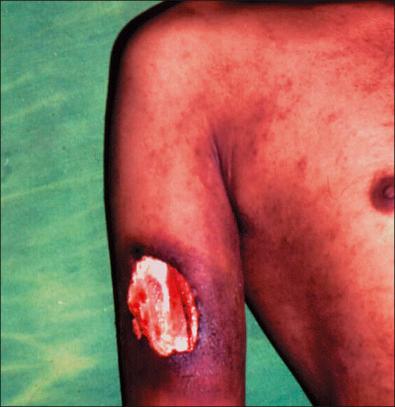
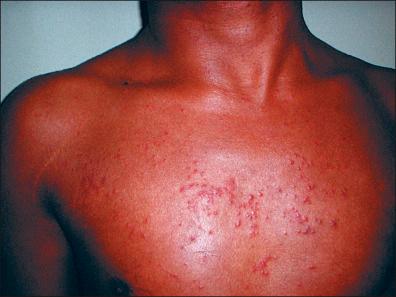
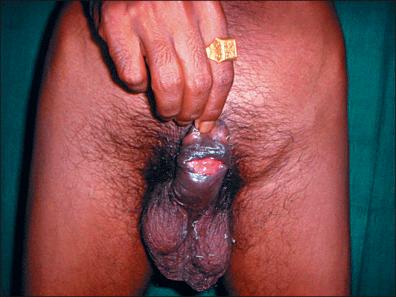
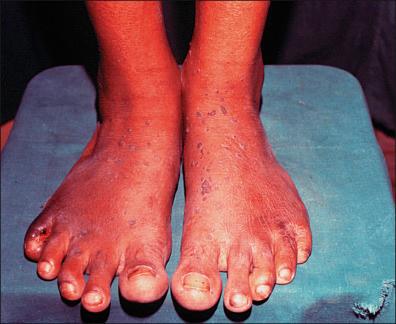
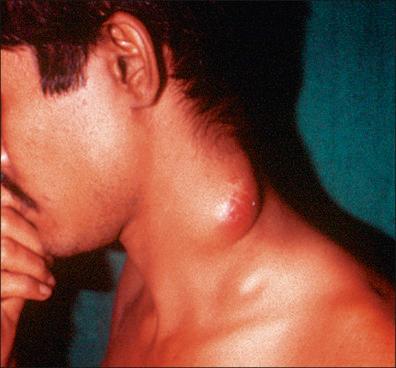
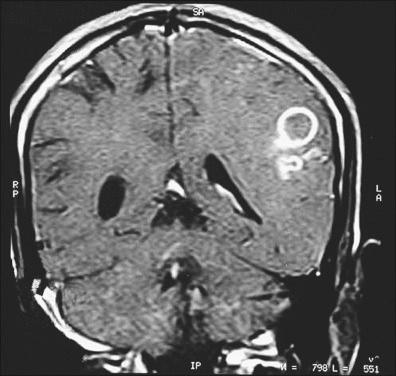
In summary, the global resurgence of TB is being accelerated by the spread of HIV, and TB has already become the leading cause of death among HIV-positive individuals. TB, along with AIDS, has overwhelmed health services and devastated urban populations in parts of Africa.
Atypical mycobacterial infections are also seen in AIDS patients, especially with M. avium , M. intracellulare or MAC. MAC infection is usually a late occurrence when the CD4+ T cell count is < 50 cell / mm 3 . The most common presentation is disseminated disease with fever, weight loss, and night sweats. Other findings are abdominal pain, diarrhea, and lower-lobe infiltrates suggestive of miliary spread; sometimes alveolar, nodular, hilar, or mediastinal adenopathy may occur.
Acute bronchitis and maxillary sinusitis are quite common. The most common manifestation of pulmonary disease is pneumonia. Both bacterial (pyogenic) and Pneumocystis jirovecii pneumonia (PCP) occur in AIDS. P. jirovecii is the most common life-threatening OI in most developed countries. The usual presentation is subacute, with malaise, fatigue, weight loss, characteristic retrosternal chest pain that is typically worse on inspiration, and non-productive cough. The chest radiograph may be normal, or may show the classical finding of dense perihilar infiltrate. The arterial oxygen tension is usually low. The diagnosis is usually confirmed by direct demonstration of the trophozoite or the cyst in the sputum induced with hypertonic saline, or in bronchial lavage obtained by fiberoptic bronchoscopy. Other causes of pulmonary infiltrate include mycobacterial infections, fungal infections, non-specific interstitial pneumonitis, KS, and lymphoma.
Pulmonary fungal infections, such as histoplasmosis, coccidioidomycosis, and aspergillosis, have been identified. Two forms of idiopathic interstitial pneumonia have been described – lymphoid interstitial pneumonitis (LIP) and non-specific interstitial pneumonitis (NIP).
Most oral, pharyngeal, and gastrointestinal diseases are due to secondary infection. The oral lesions are thrush, OHL, and aphthous ulcers ( Fig. 11-19 ). Thrush is caused by Candida albicans and rarely by C. krusei . It appears as white cheesy exudates, often on an erythematous mucosa in the posterior oropharynx, soft palate, or along the gingival border (see Fig. 11-5 ). OHL caused by Epstein–Barr virus (EBV) presents as white frond-like lesions, usually along the lateral borders of the tongue, but sometimes on the buccal mucosa. Thrush and OHL usually occur in patients with CD4+ T cell counts of < 200 / cm 3 .
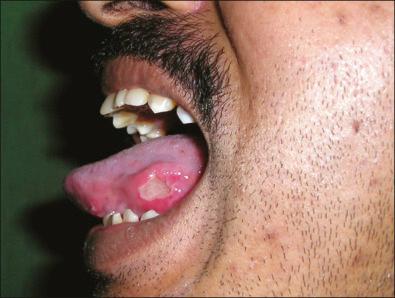
Oesophagitis can be caused by Candida , CMV, or herpes simplex virus (HSV). CMV infection is associated with a single large ulcer whereas herpetic infection presents with multiple small ulcers.
Infections of the small and large intestine with various bacteria, protozoa, and viruses can cause diarrhea and abdominal pain. Cryptosporidium , microsporidia, and Isospora belli are the most common opportunistic protozoa that infect the GIT and cause non-inflammatory diarrhea. Giardia intestinalis and Entamoeba histolytica infections are common in homosexual men ( Fig. 11-20 ). Among the bacteria, Salmonella , Shigella , and Campylobacter are commonly isolated, especially in homosexuals. CMV colitis presents as non-bloody diarrhea, abdominal pain, weight loss, and anorexia. Endoscopic examination reveals multiple mucosal ulcerations and the biopsy shows characteristic intranuclear inclusion bodies. In advanced disease, MAC infection and various fungal conditions such as histoplasmosis and coccidioidomycosis may also cause diarrhea. Besides these secondary infections, HIV infection per se can cause AIDS enteropathy.
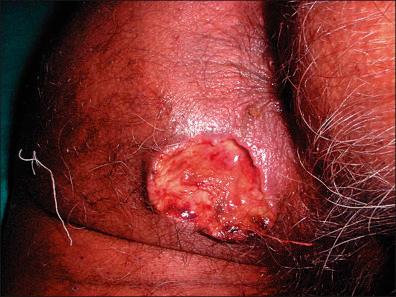
Cerebral toxoplasmosis is the most frequent OI of the CNS. It usually results from reactivation of toxoplasma cyst in the brain, causing abscess formation ( Fig. 11-21 ). The abscess can be unifocal or multifocal. Clinically, it presents with features of a space-occupying lesion (SOL). The computed tomography (CT) scan shows ring-enhancing lesions with surrounding edema.
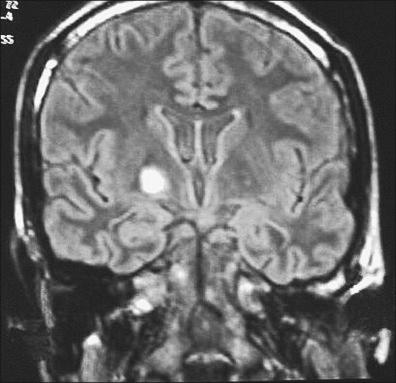
Cryptococcal meningitis accounts for 5–10% of OIs in patients with HIV infection. The clinical presentation is subacute with headache, fever, and cranial nerve palsies. Neck stiffness is relatively rare. Cerebrospinal fluid analysis will demonstrate the yeast in 70% of the cases and antigen detection is positive in 100% of patients.
Progressive multifocal leukoencephalopathy (PML) is a demyelinating disease (slow virus disease) caused by JC virus. Clinically there may be focal deficits, ataxia, and personality changes.
Patients with this disorder have a form of dementia known as AIDS-related cognitive–motor complex. In the early stages, there is impairment of memory and concentration. Later, motor signs appear, such as hyperreflexia, extensor plantar responses, incoordination, and ataxia.
Other neurologic features in HIV infection are progressive vacuolar myelopathy (with spastic paraplegia, ataxia, and loss of sphincter control), transverse myelitis (due to varicella-zoster virus [VZV], HSV, and CMV infections), peripheral neuropathy, and psychiatric manifestations (acute psychosis, depression).
Liver involvement is usually in the form of coinfection with hepatitis B or C virus. This is covered in detail elsewhere in this chapter. Direct HIV infection of the liver may lead to functional defects, which may present as porphyria cutanea tarda (PCT). The liver is also affected as a result of drug administration, including both HAART and therapy for OIs, especially antituberculous treatment.
Sclerosing cholangitis and papillary stenosis are reported in cryptosporidiosis, CMV infection, and KS. Pancreatitis usually occurs secondary to drug toxicity, mainly with didanosine.
The most common presentation is with nephritis and renal failure. Focal segmental glomerulosclerosis and mesangial proliferative glomerulonephritis account for most cases of HIV-associated nephropathy. Renal disease can also occur as a side-effect of therapy in HIV disease.
Become a Clinical Tree membership for Full access and enjoy Unlimited articles
If you are a member. Log in here